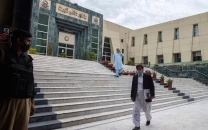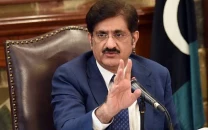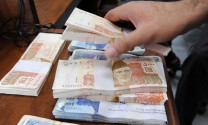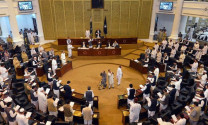Anatomy of the power crisis
It is clear that the power crisis is due primarily to a failure of public policy.

The writer is Distinguished Professor of Economics at Forman Christian College University and Beaconhouse National University
The crisis originated in the failure to invest adequately in installed capacity and in cheaper rather than expensive energy sources. Dr Afia Malik at the Pakistan Institute of Development Economics, in a powerful study, estimated that to sustain a one per cent growth in GDP, a 1.25 per cent growth in installed electricity capacity is required. Since GDP growth during the period 2002-07 was seven per cent annually, an 8.8 per cent annual growth in installed capacity was required. Yet, the Musharraf government increased installed capacity by only 2.2 per cent annually during that period. To make matters worse, successive governments have been focusing on the much more expensive oil-based thermal power plants rather than the cheaper hydroelectric plants. Consequently, the percentage of total electricity supply generated by hydroelectric power fell from 60 per cent in 1962, to only 30 per cent in 2009-10. This adverse change in the composition of electricity supply resulted in sharply increasing the average cost of electricity production, which accelerated as oil prices rose sharply.
It is testimony to the myopia of public policy that in the first decade of the 2000s, no significant investment was made in the upgradation or even maintenance of public sector power generation plants, resulting in a situation where their actual available capacity fell to only half the installed capacity. Moreover, the IPPs also did not invest adequately in maintenance and upgradation of their power plants because of the uncertainty of government policy and pessimistic expectations of future profitability. Consequently, the supply-demand gap of electricity widened, making the shortages more acute.
Until recently, the government kept the notified price of electricity that power distribution companies could charge to consumers, below the cost at which they were buying it from power producers. This created such huge subsidies owed to the distribution companies that a cash-strapped government could not entirely pay. This led to the emergence of the problem of circular debt. As the government failed to pay the full dues to the distribution companies, these in turn, failed to pay the dues to the power production companies, who then failed to pay the dues to the oil suppliers. The resultant fuel shortages induced further underutilisation of the power production capacity and thereby an intensification of the problem of power outages. The total circular debt may now be Rs870 billion.
The losses of the power distribution companies were not entirely due to the gap between cost and price. Dr Afia Malik has estimated that two-thirds of the financial losses of power distribution companies are due to theft.
It is clear that the power crisis is due primarily to a failure of public policy: delay in setting up hydropower projects, wrong choice of technology in oil-based rather than coal-based thermal power plants, delay in rationalising tariffs and poor fiscal management. What is the economic cost of the power shortage? Earlier studies have estimated that the cost to the industrial sector alone is 10 per cent of the value added in that sector, or about two per cent of GDP. Now, in an important new study by the Institute of Public Policy, the costs to the economy as a whole have been estimated. The figure is a multiple of two per cent. This is grim, but it also suggests that a strategy of overcoming the power shortage can lead to a GDP growth of eight per cent.
Published in The Express Tribune, April 22nd, 2013.



















COMMENTS
Comments are moderated and generally will be posted if they are on-topic and not abusive.
For more information, please see our Comments FAQ